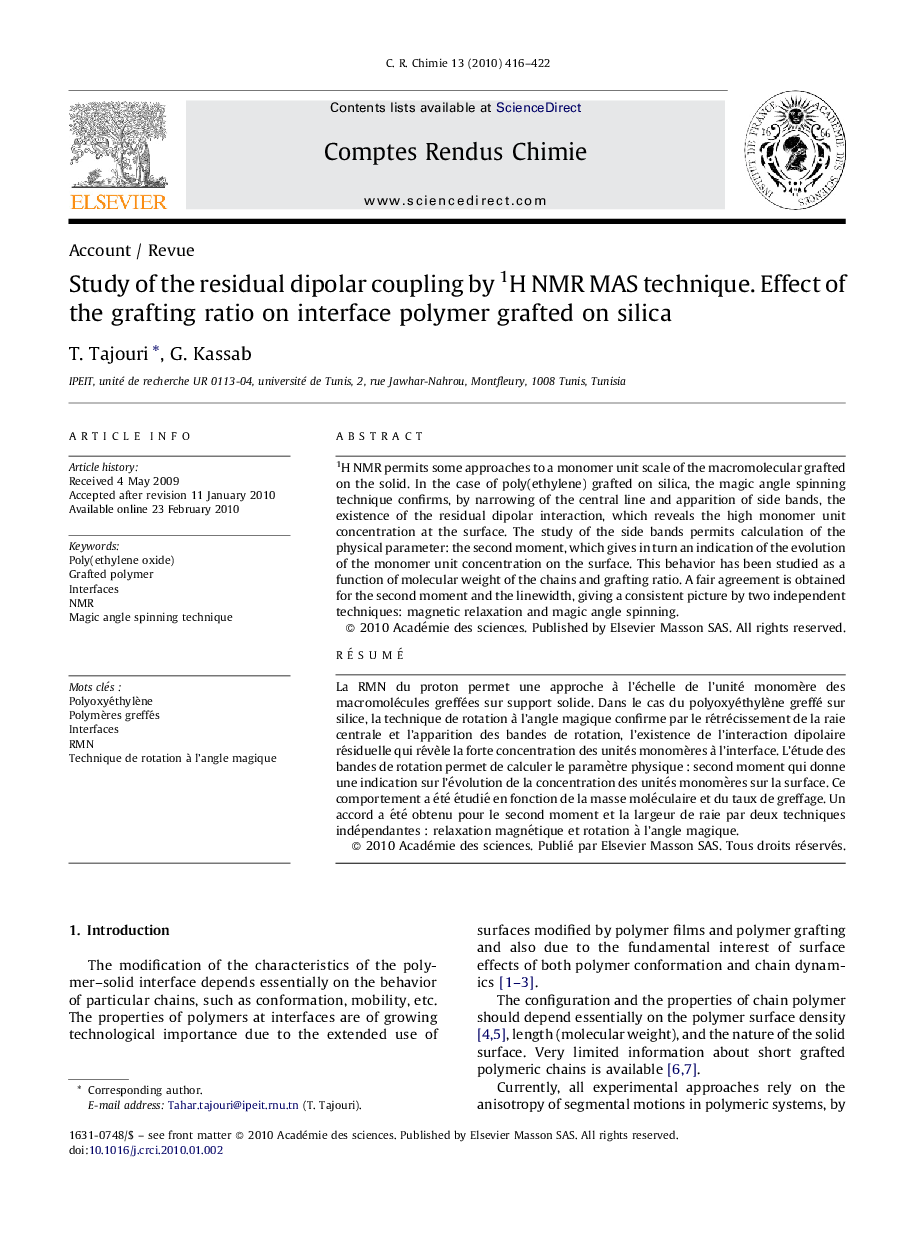| کد مقاله | کد نشریه | سال انتشار | مقاله انگلیسی | نسخه تمام متن |
|---|---|---|---|---|
| 171325 | 458450 | 2010 | 7 صفحه PDF | دانلود رایگان |

1H NMR permits some approaches to a monomer unit scale of the macromolecular grafted on the solid. In the case of poly(ethylene) grafted on silica, the magic angle spinning technique confirms, by narrowing of the central line and apparition of side bands, the existence of the residual dipolar interaction, which reveals the high monomer unit concentration at the surface. The study of the side bands permits calculation of the physical parameter: the second moment, which gives in turn an indication of the evolution of the monomer unit concentration on the surface. This behavior has been studied as a function of molecular weight of the chains and grafting ratio. A fair agreement is obtained for the second moment and the linewidth, giving a consistent picture by two independent techniques: magnetic relaxation and magic angle spinning.
RésuméLa RMN du proton permet une approche à l’échelle de l’unité monomère des macromolécules greffées sur support solide. Dans le cas du polyoxyéthylène greffé sur silice, la technique de rotation à l’angle magique confirme par le rétrécissement de la raie centrale et l’apparition des bandes de rotation, l’existence de l’interaction dipolaire résiduelle qui révèle la forte concentration des unités monomères à l’interface. L’étude des bandes de rotation permet de calculer le paramètre physique : second moment qui donne une indication sur l’évolution de la concentration des unités monomères sur la surface. Ce comportement a été étudié en fonction de la masse moléculaire et du taux de greffage. Un accord a été obtenu pour le second moment et la largeur de raie par deux techniques indépendantes : relaxation magnétique et rotation à l’angle magique.
Journal: Comptes Rendus Chimie - Volume 13, Issue 4, April 2010, Pages 416–422